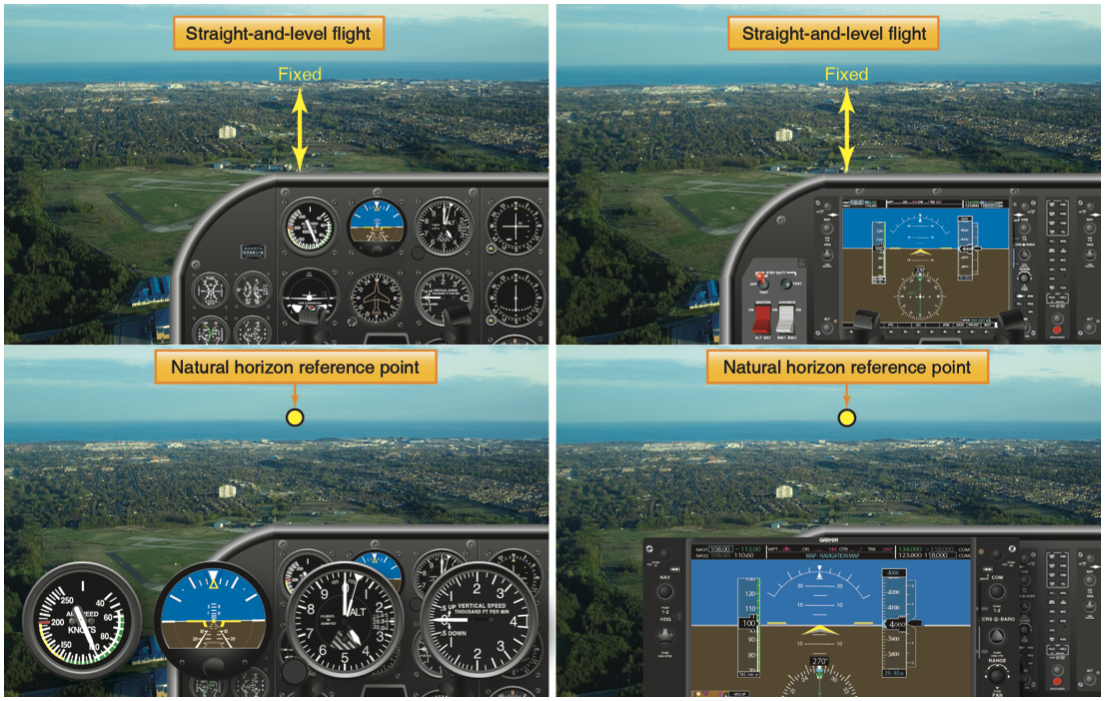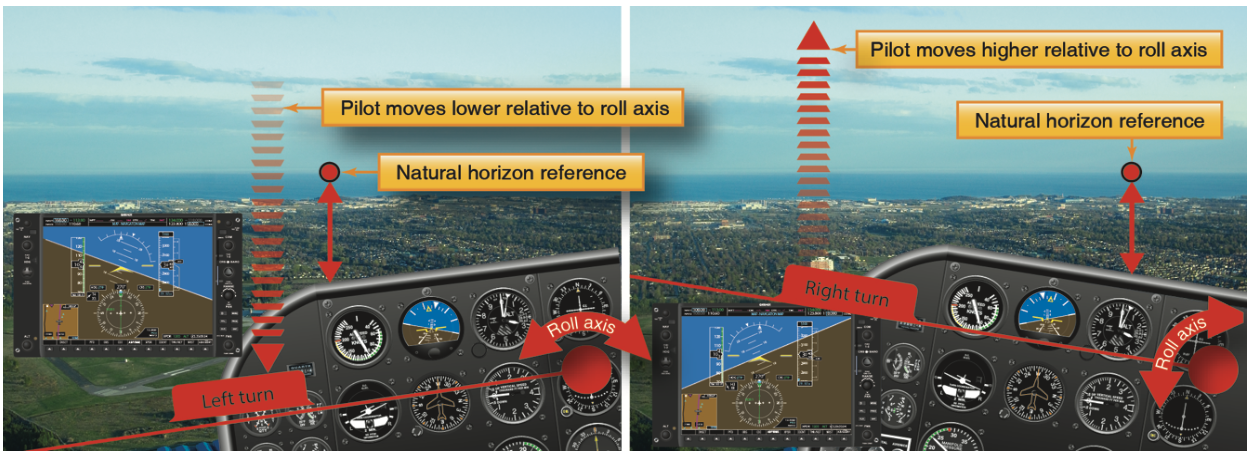Fundamental Maneuvers
Straight-and-Level Flight

Objectives
Maintain a constant altitude, constant direction, and balanced attitude in straight flight
Operation
- Leveling the airplane from a turn/climb
- Attitude, power, trim
- Visual reference to the cowling, 3-4" from horizon
- Altimeter = altitude, heading indicator = direction, inclinometer = coordination
- Level attitude will change with loading and airspeed
- Trim
- Use to relieve pressure, not control the airplane
- Leveling off: 500 ft/min climb, level off around 50' below target altitude
Aviation Instructor's Handbook pg. 3-6
Common Errors
- Failure to clear the area
- Failure to anticipate the level-off
- Failure to coordinate the flight controls
- Failure to use visual cues to maintain S&L flight
- Failure to scan for traffic
Normal Climbs
Objectives
Climb at a constant airspeed and direction while keeping the airplane coordination
Operation
- Power, attitude, trim
- Airspeed indicator = constant airspeed, heading indicator = direction, inclinometer = coordination
- Anticipate and correct for left-turning tendencies
Aviation Instructor's Handbook pg. 3-17
Common Errors
- Failure to clear the area
- Failure to anticipate the level-off
- Failure to coordinate the flight controls
- Failure to scan for traffic
- Fixation on one instrument
- Applying elevator pressure too quickly
- Pitching too steeply resulting in dissipating airspeed
Descents
Objectives
Maintain a descent at a constant airspeed or constant rate, constant direction, coordinated flight
Operation
- Power, attitude, trim
- Pulling power abruptly can cause a yaw moment to the right (negative p-factor)
- Descending to a point on the ground:
- When your target point is halfway between the horizon and straight down
- Keep your target in the windscreen with pitch, manage airspeed with throttle
Aviation Instructor's Handbook pg. 3-20
Common Errors
- Failure to clear the area
- Inadequate back-pressure resulting in a dive
- Slipping or skidding due to inadequate rudder control
- Chasing the airspeed or descent rate
- Fixation on flight instruments or a single flight instrument
Level Turns
Objectives
- Maintain a bank angle between 20-45° with a constant altitude, while maintaining balance
Operation

- Elevator controls altitude, ailerons controls bank, throttle controls airspeed, rudder controls coordination
- Elevator to maintain altitude
- Aileron controls bank
- Pilot's are seated on the left, so a left turn will look like a dive. A right turn will look like a climb

- Adverse yaw
- Upward wing produces more induced drag, causing yaw in the opposite direction
- The drag occurs as long as the ailerons are being deflected, and is proportional to the amount of aileron deflected
- Once established in a turn the ailerons are neutral, so no adverse yaw
- We still need to contend with left-turning tendencies
- Use enough rudder to keep flight coordinated
- Look at which point the horizon "cuts through" the cowling
- Anticipate the roll-out of the turn by 1/2 of the bank angle (10° of heading for a 20° bank turn)
Pilot's Handbook of Aeronautical Knowledge pg. 5-30
Aviation Instructor's Handbook pg. 3-11
Common Errors
- Failure to clear the area
- Failure to use outside visual references
- Leaning in the seat, instead of remaining upright
- Insufficient feel for slip/skip without the use of the ball
- Holding more rudder than needed in the turn
- Uneven proficiency in turn direction
- Altitude gain/loss during the turn